Seongmunjeong (석문정)
.0M 2024-02-16
2059-7 Baekdo-ro, Doam-myeon, Gangjin-gun, Jeollanam-do
Seongmunjeong is renowned for its hoechuntang (chicken and seafood soup with medicinal herbs). In Gangjin, where meat and seafood are plentiful, hoechuntang emerged as a traditional dish, embodying the region's abundance. This wholesome soup, which combines medicinal herbs, octopus, abalone, and chicken without the addition of salt, is a testament to the area's culinary heritage. Its name, "return-to-spring soup," reflects the soup's reputed health benefits, believed to rejuvenate the diner and restore the vitality of one's youth.
Dasan Chodang (Historic Site Related to Jeong Yak-yong) (다산초당 (다산 정약용 유적지))
3.1Km 2023-06-19
68-35, Dasanchodang-gil, Gangjin-gun, Jeollanam-do
+82-61-430-3911
Dasan Chodang is the house where Jeong Yak-yong (pen-name Dasan, 1762-1836) lived during his exile. He was a scholar of the late Joseon dynasty and is noted for his great contributions to the development of practical learning in Korea. After he was expelled to Ganjin for writing a secret letter of appeal for religious freedom, which later was named ‘the Hwang Sa-yeong Baekseo’, he lived in the house for 18 years while studying practical learning (‘Silhak’ in Korean). Most of his famous books were written in Dasan Chodang. While walking along a road near Dasan Chodang, you can see the Cheonilgak pavilion, which offers a great view of beautiful Gangjin Bay. Not far from Dasan Chodang is the Dasan Museum, where visitors can learn about the life of Dasan.
Da hyang so ckuk (다향소축)
3.2Km 2024-12-23
7-5 , Dasanchodang 1-gil, Gangjin-gun, Jeollanam-do
+82-61-432-0360
Dahyang Sochuk, near the Dasan Chodang historic site in Gangjin, Jeollanam-do, is a traditional hanok homestay that feels like a local museum. All rooms are red clay-walled, and have naturally dyed bed linen. Large and small flowers bloom around the house, and in the yard are many strangely-shaped bonsai in pots, creating a refined and relaxing atmosphere. Wild green tea grows locally, so tea ceremonies are often arranged.
Gaudo Suspension Bridge (가우도 출렁다리)
5.3Km 2024-01-11
San 7-1 Singi-ri, Doam-myeon, Gangjin-gun, Jeollanam-do
Gaudo Island, the only inhabited island among Gangjin's eight islands, is connected to the mainland by a suspension bridge. The suspension bridges installed on both sides of the island have emerged as Gangjin's famous destination, attracting hundreds of thousands of visitors every year. While crossing the dizzying suspension bridge, one can see the wonderful seascape that changes in brightness depending on the waves. The footbridges, Jeodu Suspension Bridge (438 m) or Dasan Bridge (716 m), can be used to entrance Gaudo Island, and there is also a clean trail along the coastline. It takes about one to one and a half hours to walk across both bridges, making it a great place to enjoy a walk.
Gaudo Island (가우도)
5.4Km 2025-01-17
473, Wolgot-ro, Gangjin-gun, Jeollanam-do
+82-61-430-3114
Gaudo Island is the only populated island of the eight islands in Gangjinman Bay. The name comes from its appearance in relation to Boeunsan Mountain in Ganjin-eup, which looks like a cow’s head. The whole island resembles a cow’s meonge (curved stick around cow’s neck used to drag farming tool) so the island became to be called Gaudo Island (Ga: Meonge in Chinese characters).
From Gaudo Island, Gangjinman Bay and the uninhabited islands can be seen in all directions. The coastal scenery is stunning and varied natural tourism resources grow here such as the silver magnolia, cypress colony, and Japanese black pines. Visitors can walk to the island from the mainland via a suspension bridge. When arriving to the island, a 2.5-kilometer long ecological exploring road along the mountain and coast is available. Also, fishing park which has various kinds of fishes is located in the spot where visitors can overlook at beautiful scenery of Gangjinman Bay. At the top of the island, visitors can enjoy a zip track which is an eco-friendly leisure facility, starting from the 25-meter Cheongja Tower.
Gangjin Ziptrek (강진 짚트랙)
5.8Km 2024-01-11
49-9 Gaudo-gil, Doam-myeon, Gangjin-gun, Jeollanam-do
This exciting activity can be enjoyed at the 25-meter high celadon tower located in the center of Gaudo Island. Gaudo Ziptrek is approximately 1 kilometer long and boasts the longest one in Korea as a maritime experience facility. After wearing safety equipment on the tower's first floor, visitors can ride the Ziptrek at the top of the sixth floor. The ziptrek offers an exhilarating downhill slide that feels like flying in the sky with magnificent scenery that unfolds down below. The slide ends at the entrance to the suspension bridge.
Gangjin Goryeo Celadon Museum (강진 고려청자박물관)
8.8Km 2024-02-02
33, Cheongjachon-gil, Gangjin-gun, Jeollanam-do
+82-61-430-3755
Goryeo Celadon Museum was established to preserve and promote Gangjin celadon, as well as foster knowledge and creativity in regards to celedon in the next generation. The exhibition halls feature smart pads and audio explanations, combining modern technology with ancient relics for better understanding. This museum is considered to be an informative historic site to get knowledge of Goryeo Celadon through the past, present and future.
Gangjin Goryeo Celadon Kiln Site (강진 고려청자 요지)
8.9Km 2022-12-29
Sadang-ri, Gangjin-gun, Jeollanam-do
+82-61-430-3755
Daegu-myeon of Gangjin-gun was the primary site of Goryeo dynasty celadon production between the 9th and the 14th centuries. Covering approximately 150 acres of land in nine villages, the area has been designated as the National Historical Site since 1963, and continues to protect its 180 fire kilns and maintain the sophisticated art of celadon production. Meanwhile, celadons produced in this area have also been designated as national treasure, and regarded highly worldwide for their artistic value, so much so that some are preserved in the Louvre Museum in France.
Bichwie Muldeulda Gallery Cafe (비취에물들다)
8.9Km 2024-01-11
20-16 Cheongjachon-gil, Daegu-myeon, Gangjin-gun, Jeollanam-do
Gangjin is a historic place that produced celadon from the late Unified Silla period to the end of the Goryeo period. Bichwie Muldeulda Gallery Cafe is a celadon-themed gallery café run by Kim Bo-bae, who comes from a family of ceramic craftsmen and runs the ceramic craft store Gukbo, which is connected to the café. The Goryeo Celadon Museum is also nearby. This café makes coffee using a celadon coffee grinder and serves it in a celadon mug. Visitors can also enjoy a celadon hand painting experience and a potter's wheel experience here. Items made from the experience program will be be baked in a kiln and delivered through parcel service. The experience takes about 30 to 40 minutes.
Historic Site of Gosan Yun Seondo (고산 윤선도 유적지)
9.0Km 2024-02-20
135 Nogudang-gil, Haenam-eup, Haenam-gun, Jeollanam-do
Historic Site of Gosan Yun Seondo is a memorial site dedicated to Gosan Yun Seondo (1587-1671), a government official and literary figure of the Joseon dynasty. Nogudang is the house where Yun Seondo lived, built in the 15th century. There is also a museum displaying numerous hanok and artifacts. It is situated in a beautiful location surrounded by large ginko trees and forests.
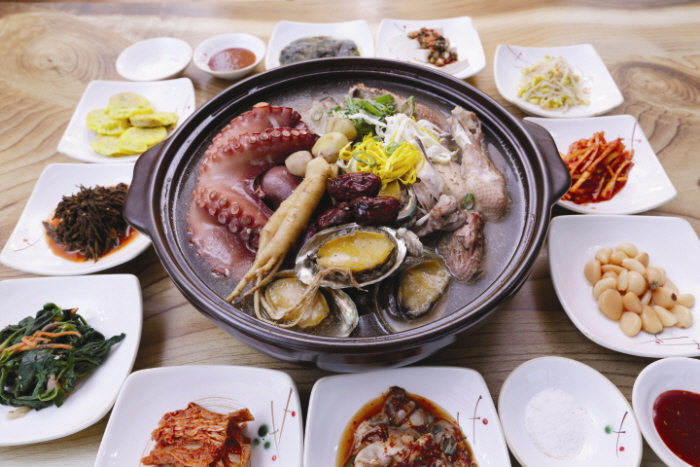
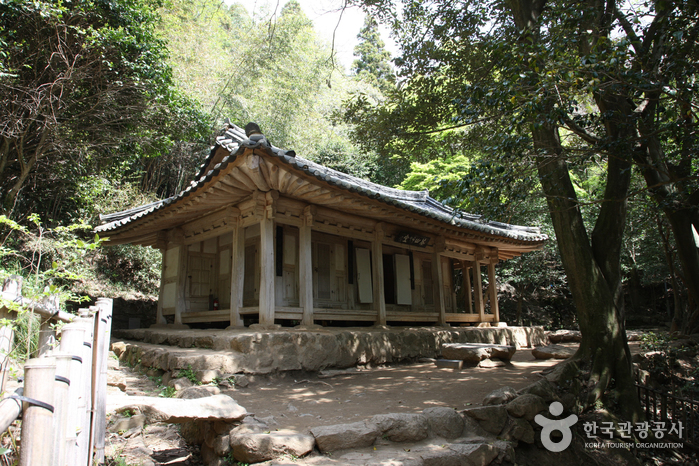


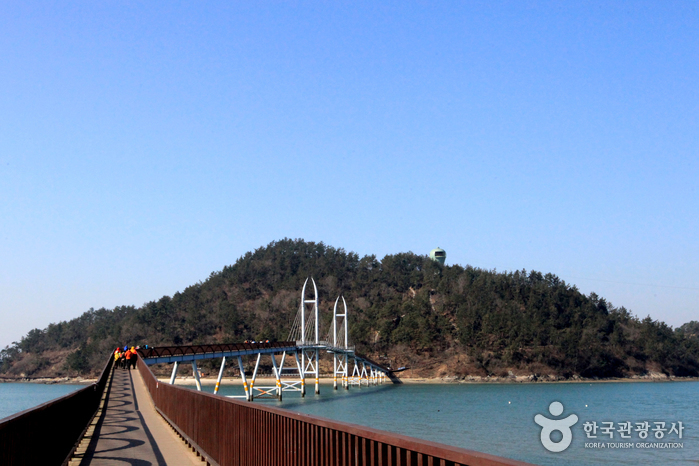
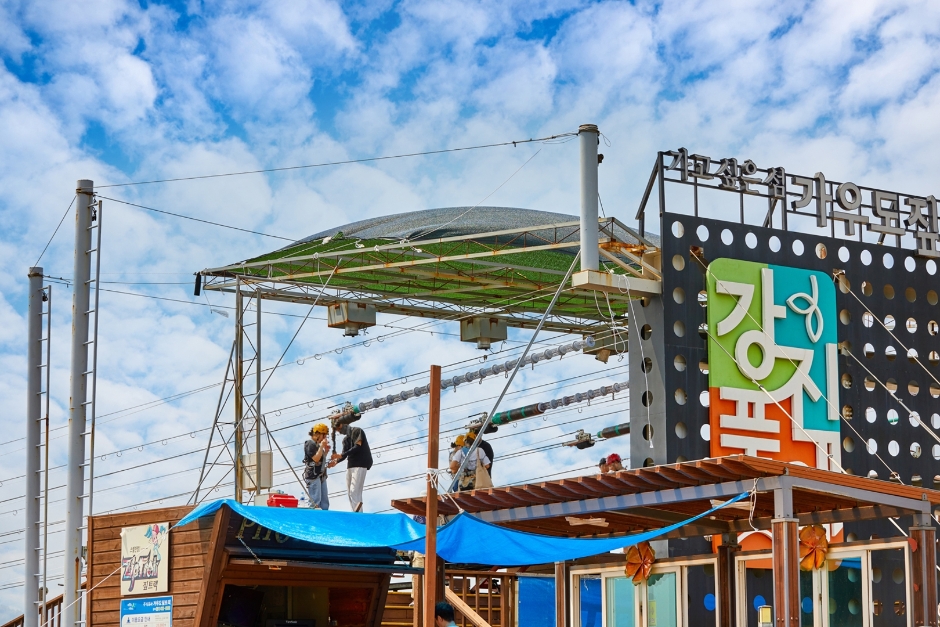

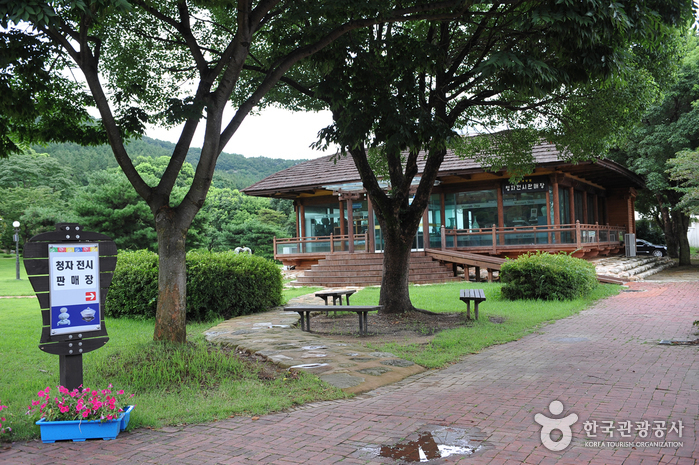


 English
English
 한국어
한국어 日本語
日本語 中文(简体)
中文(简体) Deutsch
Deutsch Français
Français Español
Español Русский
Русский